"حملہ آور اقسام" پودے، جانور یا جراثیم ہیں جو جان بوجھ کر یا حادثاتی طور پر ایک ایسے علاقے میں متعارف کرائے جاتے ہیں جہاں وہ غیر مقامی ہیں، اور ان کے منفی ماحولیاتی اثرات ہوتے ہیں۔ حملہ آور اقسام، جو آبی اور زمینی دونوں ماحولیاتی نظام میں پائی جا سکتی ہیں، اکثر تیزی سے پھیلتی ہیں کیونکہ یہ مختلف مسکن کے حالات کے مطابق ڈھلنے کے قابل ہوتی ہیں اور اکثر شکاریوں کے قدرتی کنٹرول کی کمی ہوتی ہے۔
غیر مقامی اقسام بعض اوقات حملہ آور بنے بغیر مقامی انواع کے ساتھ ساتھ رہ سکتی ہیں لیکن غیر مقامی اقسام اکثر اس وقت حملہ آور ہوجاتی ہیں جب وہ مقامی انواع کو اپنے مسکن سے باہر نکال دیتے ہیں۔ چھوٹے یا بڑے دونوں پیمانے پر مقامی انواع کا نقصان ایک ماحولیاتی نظام کے قدرتی توازن کو خراب کر سکتا ہے اور علاقے کی حیاتیاتی تنوع کو کم کرتا ہے۔ کچھ معاملات میں، حملہ آور پودوں کی اقسام حیاتیاتی تنوع کو اتنی زیادہ کم کر سکتی ہیں کہ وہ ایک مونوٹیپک کمیونٹی تخلیق کرتے ہیں، جہاں حملہ آور واحد پودوں کی اقسام ہیں جو بڑھتی ہیں۔
اگرچہ انواع کے تعارف اور حد اطلاق کی توسیع تاریخ میں ہوئی ہے، لیکن انسانی سرگرمی نے غیر مقامی انواع کی طویل فاصلے کی نقل و حمل کو تیز کردیا ہے۔ غیر مقامی پودوں کو بعض اوقات ایک نئے علاقے میں لایا جاتا ہے، جان بوجھ کر، آرائشی مقاصد کے لئے یا ادویاتی استعمال کے لئے۔ آبی حملہ آور اقسام کو اکثر ماہی گیری کے نئے مواقع پیدا کرنے یا ناپسندیدہ پالتو جانوروں کو چھوڑنے کی امید میں نئے علاقوں میں چھوڑ دیا جاتا ہے۔ پودوں اور جانوروں کی حملہ آور اقسام کو بھی غیر ارادی طور پر، حادثاتی طور پر، جہازوں کی تہہ پر، پیکنگ مواد میں یا ماہی گیری، کشتی رانی، ہائیکنگ اور کیمپنگ جیسی تفریحی سرگرمیوں کے ذریعے منتقل کیا جاتا ہے۔
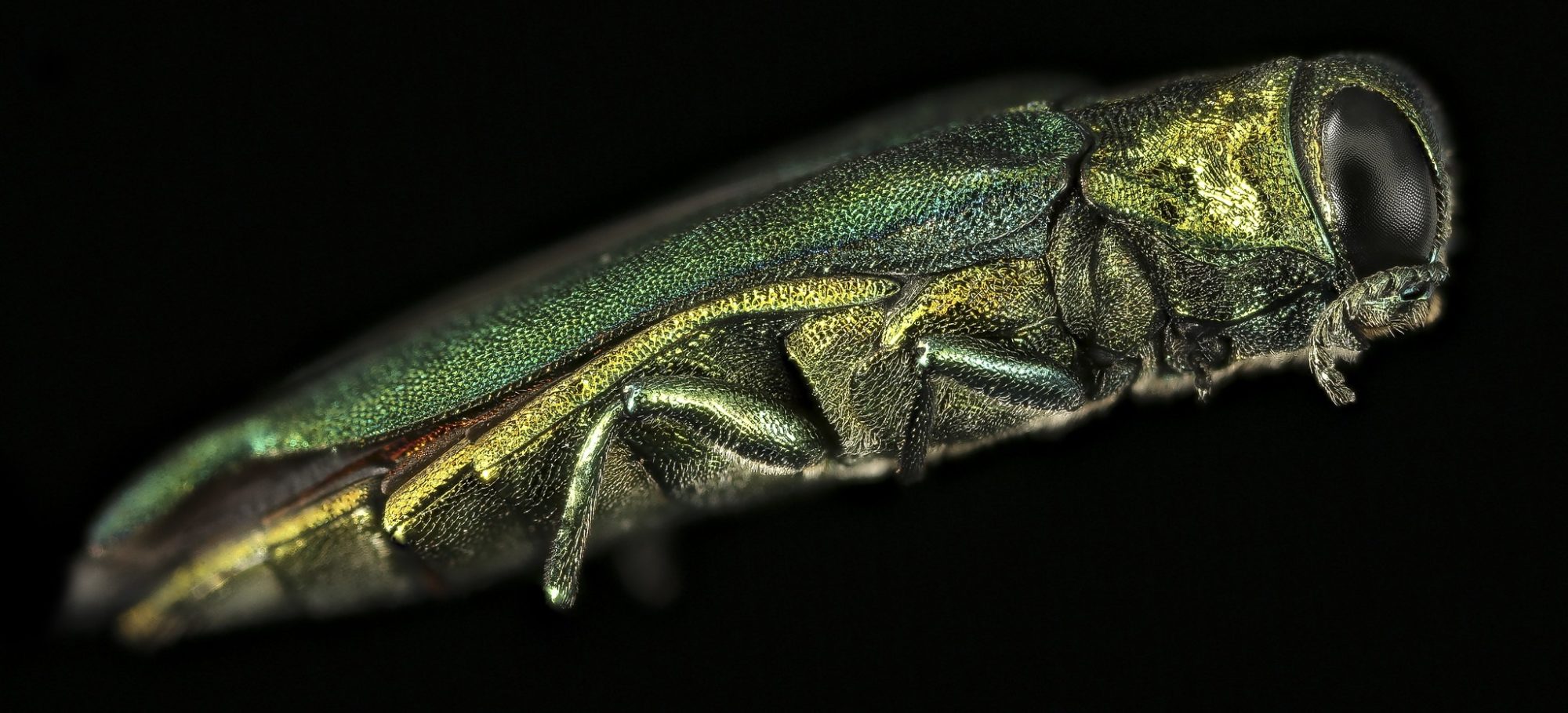
Emerald Ash Borer is an invasive beetle that was first discovered in Ontario in 2002, and has since spread to Manitoba, Quebec, Nova Scotia and New Brunswick, and killed millions of trees across the country. Emerald Ash Borer lay their eggs in the bark of Ash trees. When the larvae are hatched, they tunnel their way under the bark and feed on the inner bark, which creates an “S” shaped pattern. This damage cuts off the flow of water and nutrients to the tree, and eventually kills the tree.
The eradication of Emerald Ash Borer is no longer deemed practical in Canada. Insecticide treatments can be injected into ash trees to protect them from Emerald Ash Borer, but these treatments need to be applied for the entire life of the tree. Instead, management efforts are focused on slowing the spread and preventing it from entering areas that are currently unaffected.
Emerald Ash Borer is expected to decimate ash tree populations in the next decade, which will have significant economic and environmental impact. Dead ash trees can pose a safety risk to people, trails, roads, buildings, hyrdo lines and other infrastructure. As a result of this risk, Conservation Halton is in the process of removing around 100,000 trees infested with Emerald Ash Borer from our properties, so that they don’t hurt anyone or damage anything.
What can you do to help?
- Learn how to identify the Emerald Ash Borer species, signs and symptoms
- Monitor ash trees on your property for signs of Emerald Ash Borer
- If there is Emerald Ash Borer in your area, consider treating your Ash trees
- Report sightings of Emerald Ash Borer to Canadian Food Inspection Agency
- Do not move firewood from one area to another—buy it where you burn it!
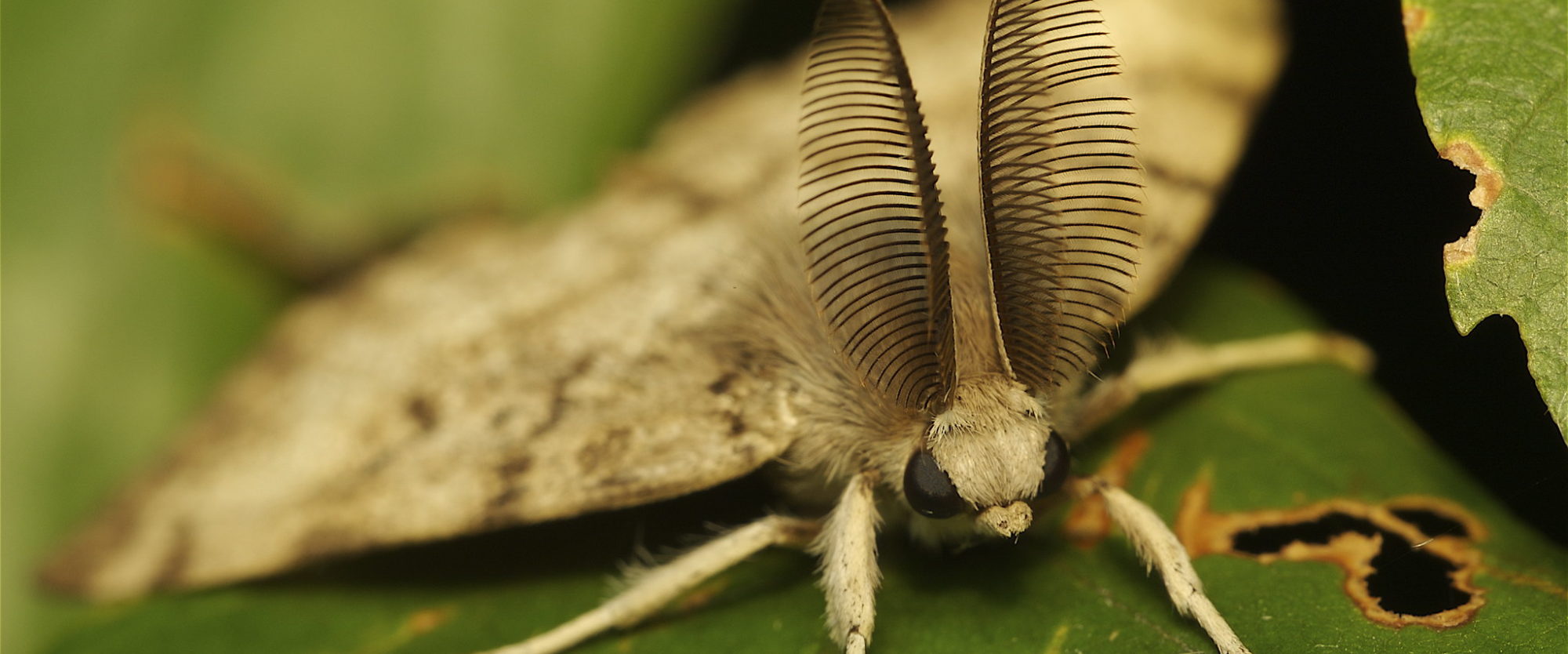
Spongy Moth (formerly known as European Gypsy Moth) was first detected in Ontario in the late 1960s, but it did not become widespread until the early 1980s, and is currently spread throughout North-Eastern United States and Eastern Canada, including Ontario, Quebec, New Brunswick, Prince Edward Island and Nova Scotia. The caterpillars of Spongy Moth feed on the foliage of more than 300 plant species. They prefer Oak trees, but also favour Maple, Birch, Poplar, Elm, and Spruce trees. Though it is not likely to kill a healthy, mature tree after one infestation, repeat “defoliation” can weaken a tree, so that it is more vulnerable to disease and damage, and eventually kill the tree within a couple of years.
What can you do to help?
Egg Mass Scraping (اگست to early مئی): Scrape the tan-coloured, oval-shaped egg masses off of the tree and directly into a bucket filled with soapy water. Seal the bucket and let it sit for two days to kill the eggs. The contents of the bucket can be discarded into the garbage. (Please note that scrapping egg masses onto the ground does not kill them.)
Tree Trunk Wrapping (مئی to جون): Take a wide strip of burlap and wrap it around the trunk of the tree. Tie a piece of string around the middle of the burlap, and fold the top half of the burlap down over the bottom half. Caterpillar of the Spongy Moth will gather under the burlap in search of shelter during the day. As often as possible, remove the caterpillars, place them into a bucket with soapy water, seal the bucket for two days and discard the contentsdis into the garbage.
Hand Picking (مئی to جولائی): The caterpillars and pupa of Spongy Moth can be picked from trees or other surfaces and placed in a bucket with soapy water. Seal the bucket for two days, and then discard the contents of the bucket into the garbage. If you remove caterpillars by hand, it is important to wear gloves because their hairs can cause skin irritation.
Spraying Btk (مئی to جون): Btk (Bacillus thuringiensis kurstaki) is a naturally occurring bacterium found in soil, which can be used as a biopesticide for Spongy Moth, with no known toxic effects on humans, other mammals, plants, birds, fish, or other beneficial insects. Btk is sprayed onto the leaves of affected trees, and when the caterpillars ingest the treated leaves, their gut is paralyzed, they immediately stop feeding and die within one to five days. (Please note that Btk must be applied when the Spongy Moth larvae are very young as older larvae have a better chance of resisting the effects of Btk.)
What are we doing about Spongy Moth?
Conservation Halton staff monitor for Spongy Moth every fall, and if the projected numbers for an area are estimated to reach damaging levels, it is recommended to apply Btk in the area of concern. Application of Btk only occurs when moth larvae are feeding (mid مئی to early جون), and this timeline for application is very small to avoid harming other beneficial species.
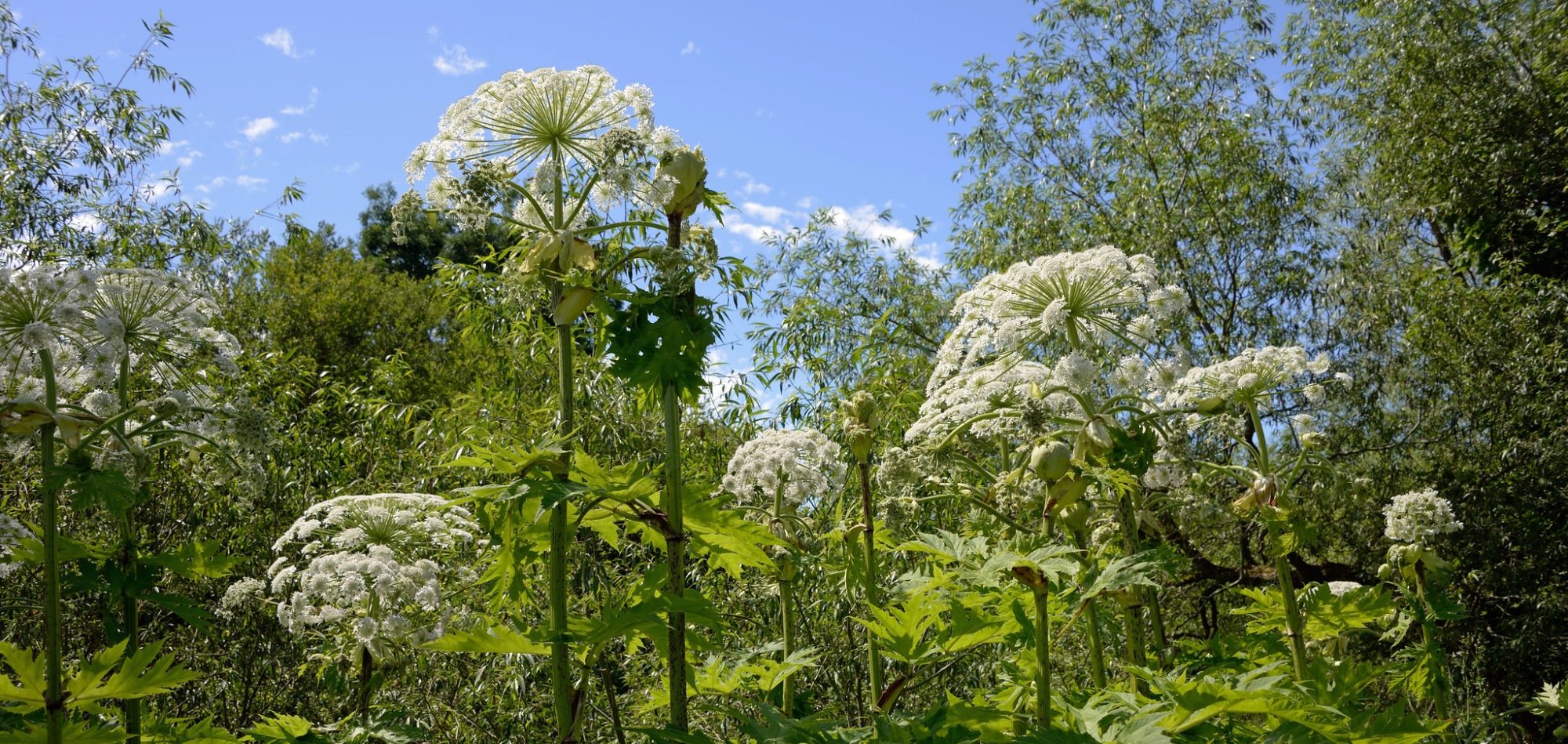
Giant Hogweed is an invasive perennial plant that usually grows from 2.5 to 4 metres (8 to 14 feet) high with leaves up to 1 metre (3 feet) in breadth. It has a thick, hollow stem, which is covered in coarse hairs. Its large, umbrella-shaped flowers are white in colour and can be more than 30 centimetres (1 foot) in diameter. Giant Hogweed is most often found in floodplains around creeks, streams and rivers, as the plant prefers moist soil.
Giant Hogweed has two major negative impacts: First, due to its invasive nature, Giant Hogwood poses a threat to biodiversity. Second, the plant produces a noxious sap that causes a skin reaction known as photosensitivity, which can result in severe and painful burning and blistering.
What can you do to help?
Private landowners are responsible for the management and removal of Giant Hogweed on their own properties. Given the health concerns associated with Giant Hogweed and similar plants with phototoxic properties, it is highly recommended that private landowners hire a licensed professional to remove the plant to ensure safe procedures are followed. A list of giant hogweed abatement professionals prepared by the Ontario Invasive Plant Council can be viewed at www.ontarioinvasiveplants.ca (for information purposes only).
If is important to wear proper clothing (long sleeves, high shoes, gloves, face and eye protection) when you are in vicinity of Giant Hogweed, in order to reduce the chance of contact with the plant. If skin contact does occur, the area should be washed immediately with soap and cold water. Since the sap increases the photosensitivity of the skin, you should to avoid exposure to the sun for at least 48 hours after contact.
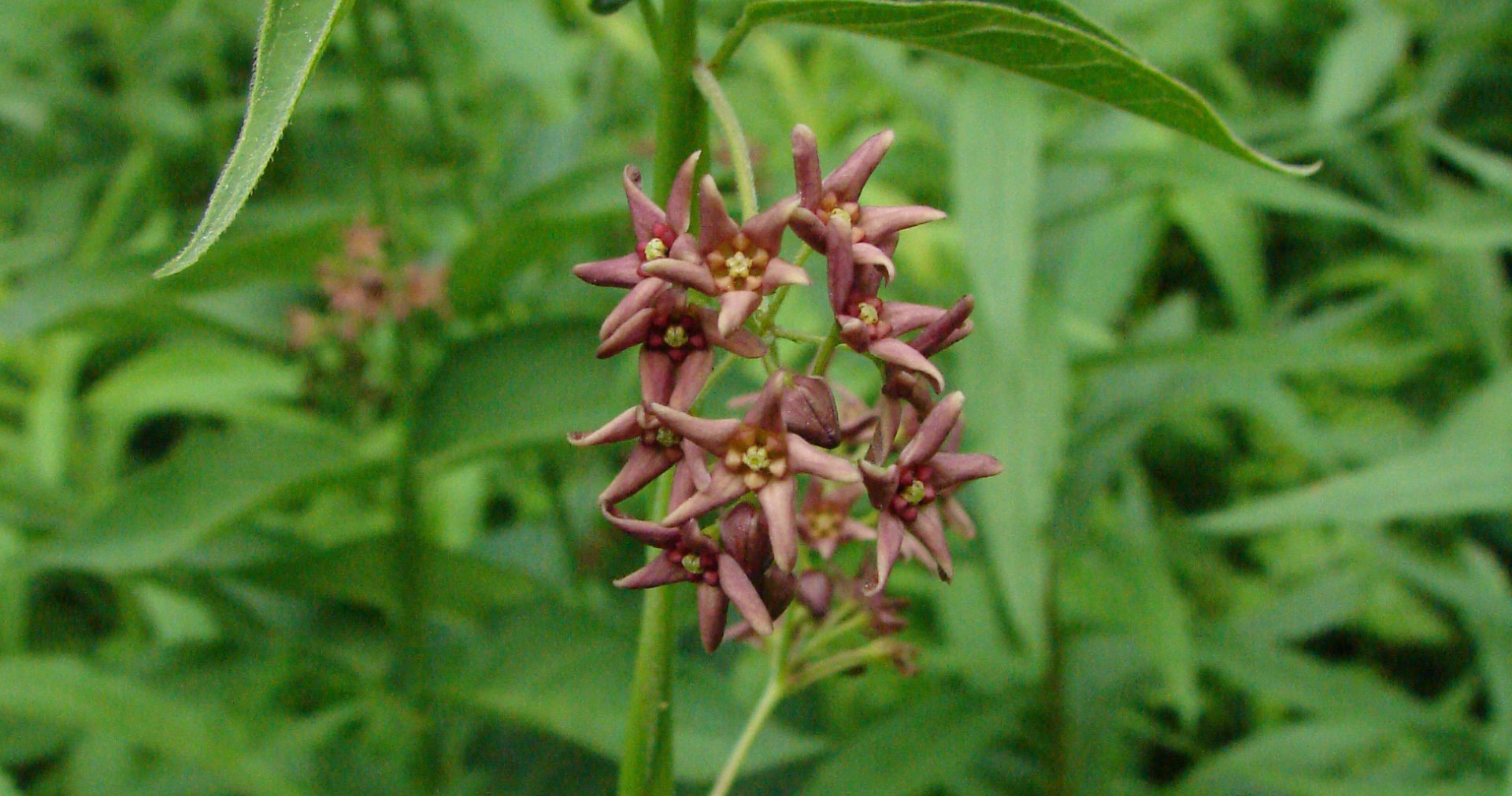
Dog-Strangling Vine is an invasive perennial plant that was introduced to North America from southern Europe as a garden ornamental in the late 1800s. Since that time, the plant has spread throughout urban areas in Southern Ontario, and more recently, it has spread into more rural and natural environments. Dog-Strangling Vine is known to crowd and strangle native plant species, making it a threat to biodiversity.
There are a number of species that can be referred to as Dog-Strangling Vine, but Black Swallowwort is the most common. This species has oval leaves with pointed tips, and small, star-shaped flowers with five dark purple leaves. Another species, Pale Swallowwort, is almost identical to Black Swallowwort but its flowers are lighter in colour, ranging from pale purple to reddish purple.
What can you do to help?
Dog-Strangling Vine can be difficult to eradicate but manual removal is known to be the most effective method. Plants can be dug out, making sure to remove the entire root, placed into a black trash bag, left in the sun for three to four weeks, and discarded with the garbage. In order for this method to be most effective, it is important to be thorough in removing each of the plants in their entirety.
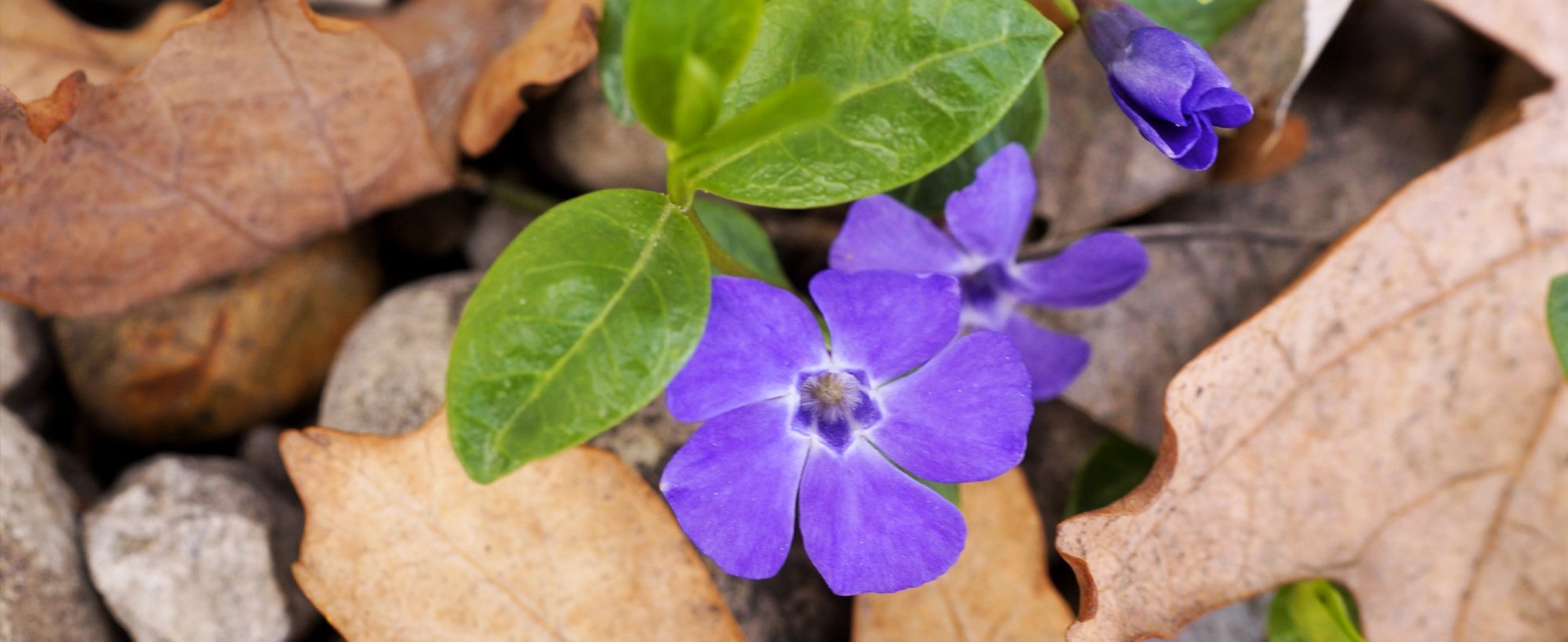
Periwinkle is an invasive plant that is often sold in nurseries as groundcover for “problem areas” in gardens due to its ease of growth. As a groundcover plant, Periwinkle has a long, thing stem that can grow 1 to 2 metres in length but will not grow more than 20 to 70 centimetres above ground. This plant has dark, shiny leaves and purple flowers with five petals that appear in early spring. Periwinkle prefers moisture and shade, but can grow in many habitats. Unfortunately, as a result, Periwinkle is known to spread throughout large areas and smother native plant species, which poses a threat to biodiversity.
What can you do to help?
Periwinkle can be dug out, making sure to remove the entire root, placed into a black trash bag, left in the sun for three to four weeks, and discarded with the garbage. The most effective way to prevent the spread of Periwinkle is to not plant it in the first place! Instead, there are many groundcover alternatives to Periwinkle that are not invasive: Bunchberry, Dwarf Raspberry and Wild Ginger are great for damp, shaded areas, and Wild Thyme, Wild Strawberry and Ostrich Fern are great for dry, sunny areas.
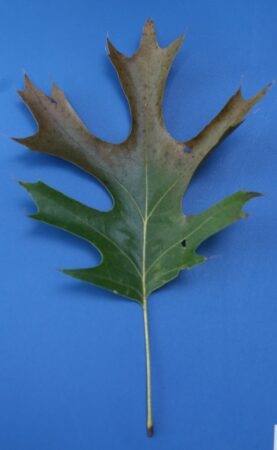
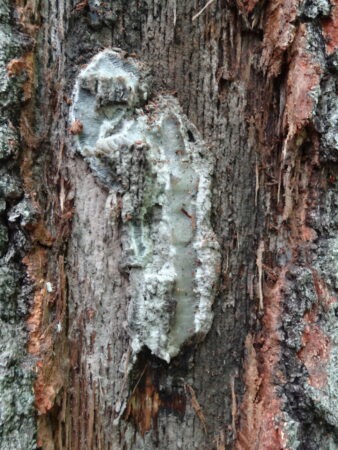
Oak wilt is a fungal pathogen that has been confirmed at two locations in Ontario, making it the first known cases of the disease in Canada. Red oaks are very susceptible, and tree death can occur within a single season.
The fungal disease grows on the outer sapwood and moves through the vascular system of the tree, slowly restricting the flow of water and nutrients. The fungal spores are spread by small nitidulid beetles that feed on sap from fresh wounds and carry the disease from infected trees to uninfected trees. As the beetles feed on sap, the fungus moves into the vascular tissue and the tree reacts by walling off the spread of the disease, plugging cells. This response is what causes branches to wilt. Another method of spread is through interconnected root systems (root grafts) between infected and healthy oak trees allowing the disease to spread within a stand.
The most noticeable symptoms are sudden wilting and premature dropping of leaves in mid-summer. Leaves at the edge of the canopy are usually the first to wilt, with this wilting progressing toward the inner canopy.
The signs of oak wilt are:
• Dull green, brown or bronzing of the leaves
• Premature leaf drop
• Vertical cracks on the trunk from pressure pads that emit a fruity smell.
• White, grey or black fungus
What can you do?
• Don’t prune oak trees between اپریل and نومبر
• Do NOT move firewood
• Report suspected signs to the CFIA
• Check oak trees for signs and symptoms of oak wilt
For more information or to report oak wilt, click here.
If you see an invasive species, you can send a report to the province-wide Early Detection and Rapid Response Network or iNaturalist. If you find an invasive species on Conservation Halton property, you can report your sighting to us at forestry@hrca.on.ca.